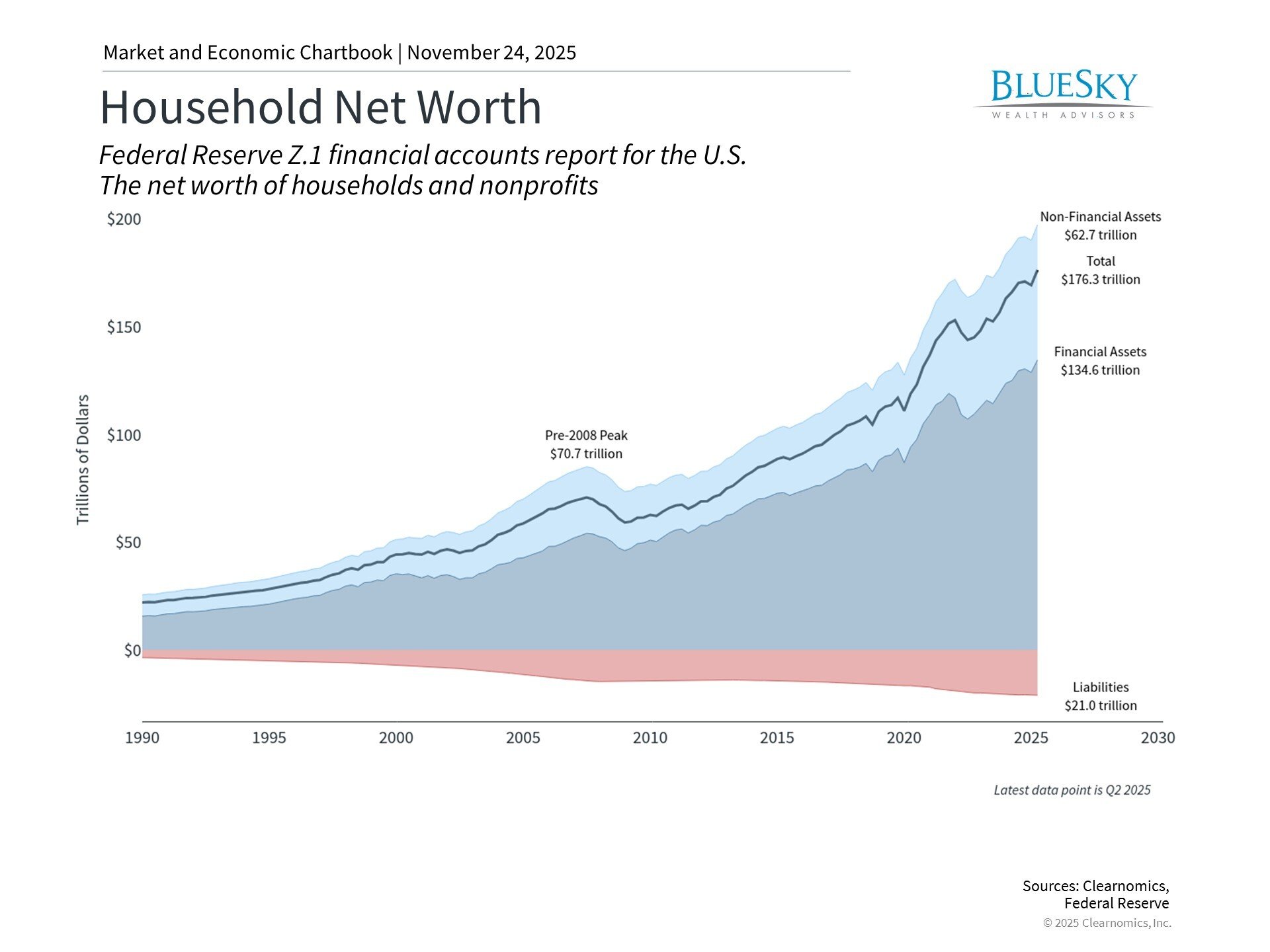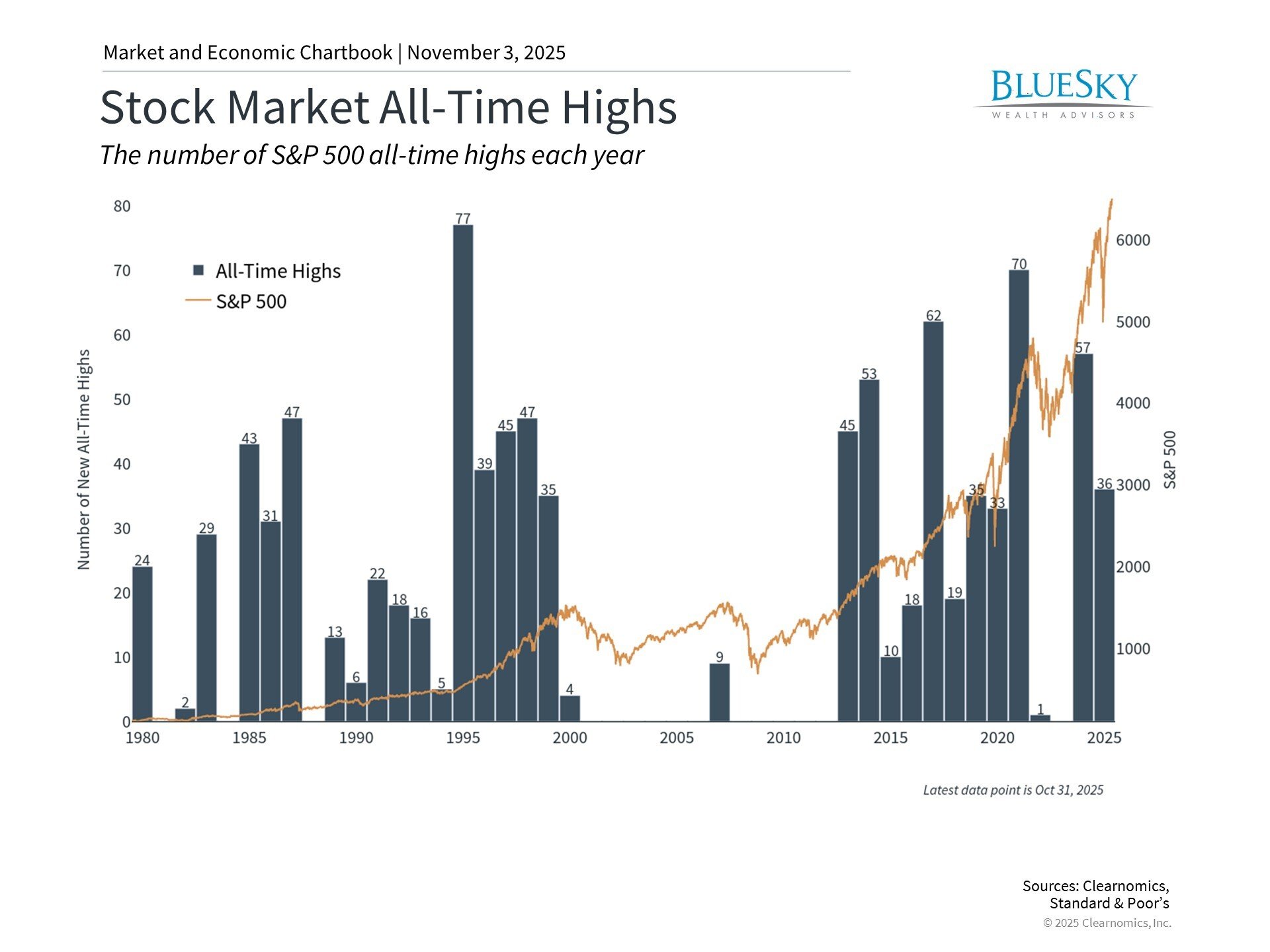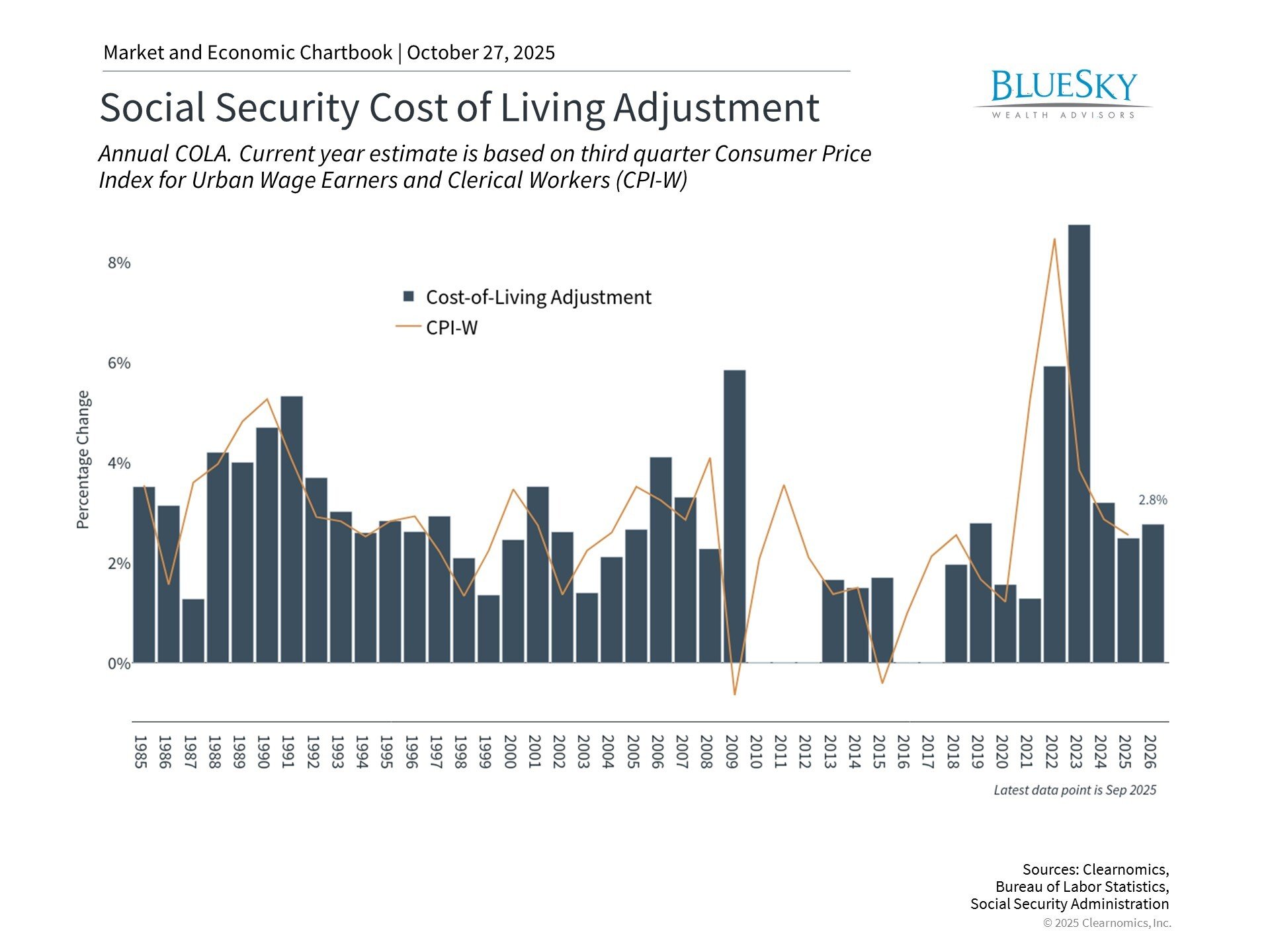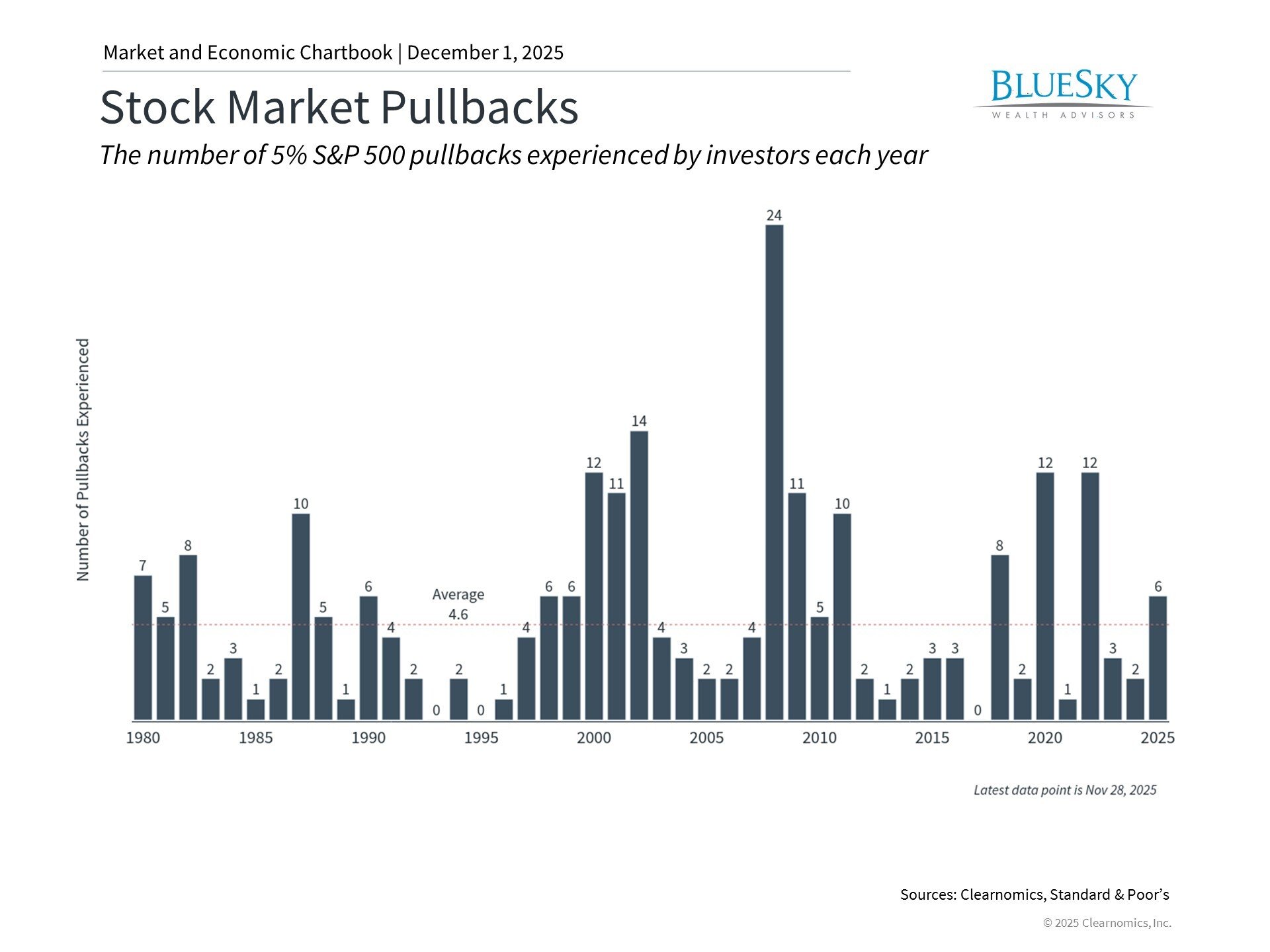
MARKET UPDATE: PART TWO
MARKET UPDATE: PART TWO
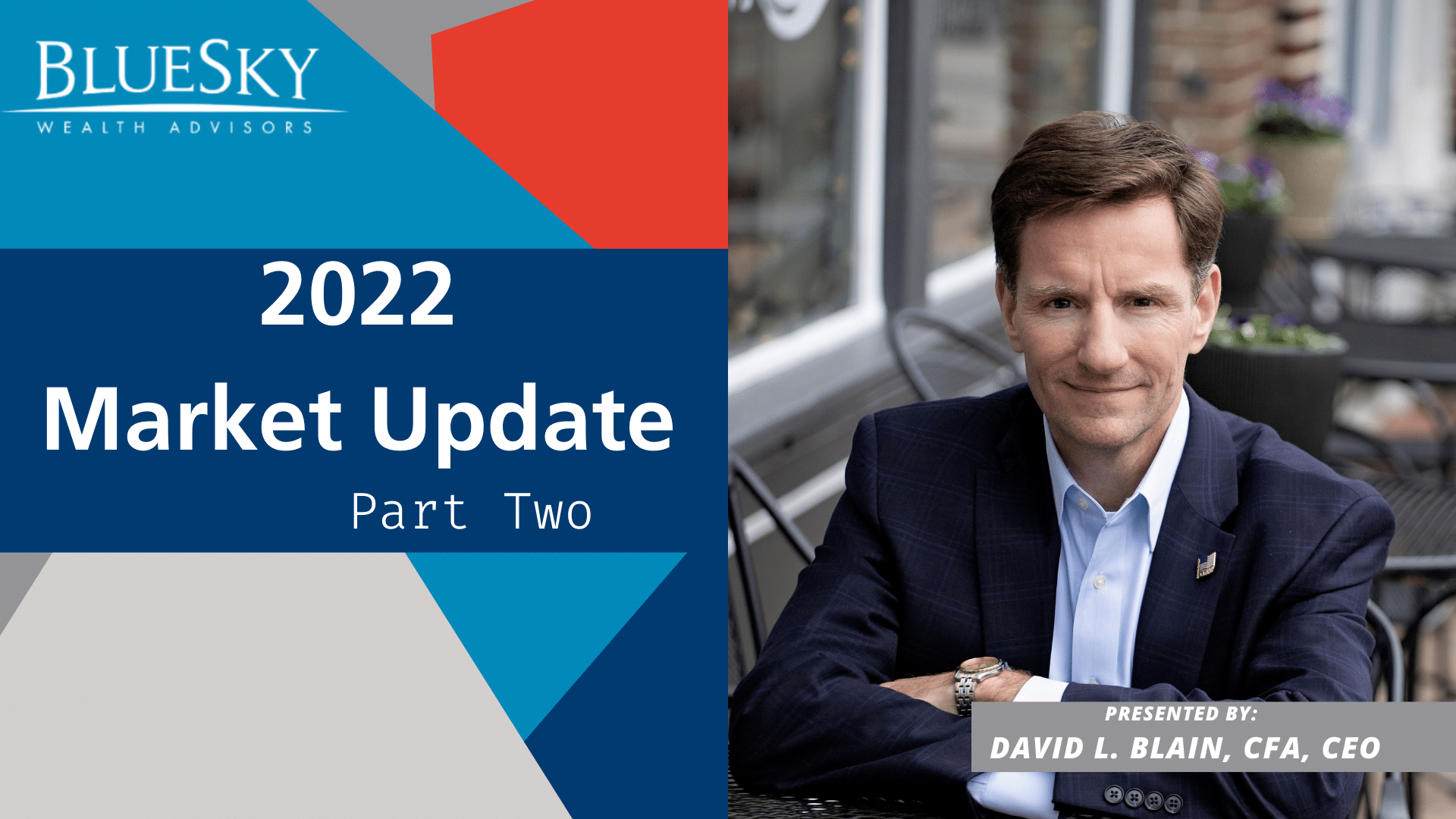
David L. Blain, CFA and the Founder and CEO of BlueSky Wealth Advisors, addresses the steep decline in the markets and what BlueSky is doing to ride the wave. David asks that if you have any questions, don’t hesitate to contact your advisory team or David himself.
TRANSCRIPT:
Good afternoon, everybody. This is David Blain, CEO of BlueSky Wealth Advisors, coming to you here today from our beautiful headquarters in New Bern, North Carolina. Unfortunately, the markets are not so beautiful today. It’s another down day on Wall Street, couple 3, 4%, depending on which index you look at. So I wanted to make this video today just to talk about what’s going on, what we see for the future, and what if any actions that you should take.
First of all, let me acknowledge, there’s a lot of craziness going on out there today. You’ve got stock markets declining, inflation, food prices, gas prices are going crazy. Going to grocery stores, you see empty shelves, trying to buy a car, lots are empty, just a lot of things happening. Of course, the disaster that continues over in Ukraine, the invasion by Russia of Ukraine.
So there’s a lot of things going on to process. And so what I want to do today is just take a few minutes to just set the stage of what’s happening, things that you should be concerned about, and maybe things that you shouldn’t be quite concerned about. I know how you feel. I feel that the pain as well. I drive a pickup truck and it costs me over a hundred dollars to fill that thing up. I have a diesel motor home. Diesel prices here in North Carolina and most up and down the East Coast where I travel are well above $6 a gallon pretty much today. Have a bunch of teenagers at home that like to eat a lot of food. So feeling that food prices. So I definitely know how you feel. And what I want to do is talk about, I felt the same way.
David Blain:
I started my investing career, probably we’ll just say in the early 1980s. I lived at home. I had a newspaper route. I had a little business fixing bikes, repairing them, selling them, different things like that. So I was making some money and my father took me down to a local bank, taught me how to invest a CD. He also had this subscription of this publication called Value Line. For those of you that maybe haven’t heard of that, it’s a investing publication for individual stocks.
So I started investing way back in the early 1980s. What I did for today was I went back to all those different timeframes and I thought I would share with you a little chronology of investing in my lifetime. I have a list here of all the different declines from a high starting in 1981, where the market went down either 30% after 50 days, sort of a quick, sharp, big decline, or a 13% decline after 145 days. You can see 1981, ’83, ’87, ’90, ’98, 2000, 2002, 2007, 2011, 2015, 2020. And then of course this one that started in January of 2022 and still ongoing to today.
You can see the percentage loss. You’ve got some modest ones. You’ve got some 20s, some 30s, some teens. And of course the big one there in 2007, 2008, where the US equity markets lost about 53.8%. In 2020, when COVID hit, that was a quicker one. You can see over here, I have the number of days listed. It was only 40 days long, but boy, was it a painful 40 days, minus 37%. The reason I wanted to share that with you is just to let you know that I have been through this before.
A lot of you that are clients of BlueSky, you’ve probably been through this before. Maybe you didn’t notice it. Maybe this time seems worse. They’re all different. If you look at what happened in the ’80s or the ’90s, or the 2000s or the 2020, every one of them had a little bit unique flare to them, but they all resolved themselves in time. So that’s what my main message for today, is just that, that this is no different than the other, I think it’s 12 or 15 bear markets that I’ve been through.
Each one is a little bit unique circumstances, but I have a saying around here that as long as people want something better for their lives, some people have given up on their own lives, but they want something better for their children or grandchildren. Who do you know that you’ve ever spoke to that doesn’t want a better life for their children and grandchildren, who doesn’t want a better plan and a better way of life, a better standard of living?
I’ve never met a person that says, “I really hope my kids suffer or that my grandkids live in poverty.” Yet nobody says that. And so as long as humanity has that belief in the future and wants something. And as long as people continue to invent, produce and sell goods and services that people want and need, and make a profit in doing so, which there has to be some sort of incentive to do that. Then the underlying fundamentals of the economy and the stock market will remain intact. That’s what drives commerce. And it’s been that way probably since cavemen. I don’t know, I wasn’t around then, but certainly in modern history, modern recorded history that we have, dating back hundreds and hundreds of years of commerce, and certainly the modern history, starting around the 1900s of modern stock markets. That’s been the case.
I personally don’t believe that entire system is going to collapse overnight, that people will still want goods and services and they want for a better world for the future. So a message for you today is yes, it’s ugly. I’m feeling the pain with you. As those of you that are clients know, I invest in the exact same things that you do. My portfolio has the same ETF investments. I invest in the same real estate that we recommend to clients. I buy the same food. I put the same gas. And so that is not lost on us.
I would say that I’m not retired, I’m still working. So those of you that are retired and are living off your portfolio and pension, social security, that kind of thing, yeah, it can be a very scary time. So don’t hesitate to reach out to your advisory team, whether that’s me or one of the other wonderful advisors we have here, we’ll be happy to look at your planning, look at the markets, look at what’s happening and see if there are any adjustments that you need to make.
It may not be a great time to take out a big chunk of money to put on a down payment for a house or something like that, but certainly reach out. It’s not the worst bear market we’ve ever been to. So the next group of people, those of you that are still working, but were hoping to maybe hang up retiring, once again, reach out to me or your advisory team. Let’s talk about it, let’s see where you are. Let’s see how you’re positioned. For those of you invested in our real estate, still performing extremely well, throwing off tremendous amounts of cash, as well as gains in the property. Probably the gain part may slow down a little bit, but certainly a lot of income being produced. So those of you in that retiree type category, or thinking about stopping earning an earned income, let us know, and let us take a look and see if the income producing type portfolio of real estate is right for you.
And then of course, the third group of people, I guess people I would fall in that is people that are still investing, still working, still love what they do, have no plans to give up. You really shouldn’t worry about it. You should try to take money and invest it. We don’t know where the bottom is, but certainly if you’re well number of years away off from living off of your portfolio, this is nothing to be concerned about. So that’s kind of my introduction. I’m going to keep going here and delve into some details, but I just wanted to hit the first part. You know, I understand what’s going on. There’s a lot of craziness in the world today, but as I look back over my investing career and just take a deep breath, none of what we’re seeing today has not happened before.
The combination of things are unique. War inflation, interest rates, stock markets, economy, economic things, political environment. These things have happened before, maybe not in the exact same combination, but as long as human nature has not changed, we will continue to prosper. And we will recover from this. I don’t think it’s going to be a short path, not next week. It’s not going to recover next week. Probably not even going to recover this summer. But as we get into the midterm elections, certainly will inject a degree of hope and at least 51% of the population, whoever has the majority after that, will have a renewed sense of hope that their particular views or their particular party can turn things around. But it’s not going to be an easy road back to normalcy.
So those of you that just wanted the highlights, thank you for joining me this afternoon. For those of you want to stick around for a little bit more information, I’m going to go in depth on a few more things. Okay. So first of all, let’s talk about what is happening in the markets. I just wanted to share a screen here for you. It’s just Morningstar, nothing fancy, but taking a look at year to date, I’ve broken it out. International markets, you can see minus 14, 12, 17%, the REITs real estate, publicly traded real estate off about 21%. In the bond markets, high yield, of course, minus 12. This is the real surprise. The aggregate bond down almost 12% year to date are TIPS, inflation-protected securities. It’s not foolproof, doing better than some of the other bond investments, but as you can see, it has declined as well. Best performing bond investment is short term corporate bonds, certainly having a short duration or investing in bonds that mature in the relatively short term has been beneficial this year.
And then we get into the equity markets, our US targeted value. So those companies that are value oriented, and I’m going to talk about this in a minute, have done much better. You can see the declines of value companies are about half of the regular small cap and large cap. So just kind of a little brief there, lots of red on the page. But as I said in the beginning, part of this, nothing that hasn’t happened before. We’ve been in periods of rising interest rates, interest rates have gone up. The ten-year treasury yield is above 3%, pushing 3.5%. Just a short time ago. It was 1.5, 1.8%. The rates about doubled. The 30-year mortgage is up over five and a half percent today. I don’t remember exactly, but when I refinanced my mortgage, I got 2 1/2% percent on my mortgage.
So definitely rates are going up and you can’t have that without some impact on the fixed income market. As I’ve said many, many times, as long as your investing horizon, meaning the amount of time that you plan to be invested in fixed income, is longer than the average maturity of what you own in your portfolio. If interest rates go up, the value of those bonds do go down. But as long as you plan to hold that investment or invest in fixed income for a long enough period of time, you will make it up. It’s been a number of years since we’ve had a rising interest rate environment, but there have been short term times where we have had rising interest rates in the past 5, 10, 15, 20 years. The last significant period of rising interest rates of course, was a long time ago, really kind of in the post World War II period.
Inflation. Inflation, of course, everybody feels that at the gas pump. Most people are familiar with the rising energy prices, rising food prices, which hit us all. We’ve also seen rising wages. The wage increase for low paid jobs, such as waitresses and warehouse workers, some of those lower paid industries, the wages have really gone up tremendously because of the labor shortage. Not enough people in the labor market as we came out of COVID. Some people chose not to go back into the labor markets, but wages have really spiked. Of course, here at BlueSky, we’re not immune to that as well. Our employees look around and see what other people are making, and we’ve had to give significant raises to people here at BlueSky. So it’s really across the board we’ve seen a lot of wage increases. And so whenever you have wage increases and people have more money, when you have the federal government printing money and injecting trillions of dollars into the economy, you’re going to have inflation.
I don’t care what the politics say. Forget what side of the aisle you’re on. It’s basic economics, and any economist that is true to their profession would tell you when you have too many dollars chasing too few goods, that’s when you have inflation. And when the federal government can print money, literally print it out of thin air, you end up in a situation where you have too much money chasing too few goods. And that is the definition of inflation. In the Great Recession, the federal government, under President Obama mostly, enacted about $800 billion worth of stimulus. The stimulus for COVID, I don’t think anybody actually knows what it is. Probably in the four to five trillion, at least, range. That is an incredible amount of money pumped into the economy for a largely self-inflicted issue. And you just can’t do that. That, combined with the supply chain disruptions of industries, governments, whoever you want to blame, keeping people at home and not working in the industry, not producing goods, not producing food, not producing toilet paper.
Whenever you have that combination of not enough people working, with money being injected into the economy, if you were to write an economic textbook on the chapter on inflation, that is exactly what has happened. In fact, we’re seeing it. I have to take a couple of business trips here. I’m trying to book some flights. A, The price of plane tickets has just skyrocketed, especially since people don’t have to wear masks anymore. People getting on planes all over the place. The price of fuel of course adding to that. But it’s the demand. The demand for air travel now exceeds pre-COVID levels. People are just been pent up, pent up demand, business travel, leisure travel, people are trying to travel. And so what was a $3-400 flight a couple years ago, pre COVID, I’m seeing they want $1,200 for that flight. It is really ridiculous.
So the inflation is hitting hard, and it’s going to take a while for that to work its way out of the economy. The Federal Reserve, by raising the interest rates, they only control the overnight lending rate, which hopefully will ripple through the economy, but it’s going to take some time. They do not have a magic lever to pull to just slow down inflation immediately. It’s going to take some time. The demand has to settle down. The wage increases have to settle down and we have to get our supplies back up of energy, food, formula, you name it, the shortage of the week. It’s going to take some time for that to work out.
I think one other thing that I look at is the sentiment that’s out there. When we look at the negative, what are people’s attitudes towards the economy, certainly is down significantly. Consumer confidence, investor optimism, CEO optimism, all those things are declining significantly. The big question we get a lot is, is there going to be a recession? And I don’t want to sound glib or unfeeling, but it really doesn’t matter if there’s a recession. A recession is a sort of artificial construct that when you look back in time, did the economy decline in growth two quarters in a row? Did it have negative growth two quarters in a row? And whether we did, or we didn’t, it doesn’t really matter. Growth is slowing down right now and it’s painful. Inflation is going up and it’s painful, but what we do see typically, and I’m going to share a couple charts with you, is I guess the good news is for investors.
The markets are leading indicators of what’s happening. So what does that mean? It typically means that when economics are changing, the stock market is looking at that down in the future, six months, 12 months, 18 months into the future and saying, whoa, there’s a storm coming. There’s a hurricane coming. There’s a flood coming. And the markets typically decline in advance of the economy. So I want to share with you, I got this from some people over at JP Morgan. We’ll put this together. But they put together these little charts. I hope you can see that on the camera. Going back to some of the more significant recessions starting in the Eisenhower. The blue line is the S&P 500, the stock market. The gold line there is the gross domestic product. So you can see here, the stock market peaked in July of ’57 or so. The economy growth peaked more like looks like about September of ’57, but then the market started seeing some problems way back here in the summer.
And so it started declining to where it hit the bottom in December of ’57. But you can see also from this chart that the economy didn’t bottom out until the spring of the next year. You know, it looks like somewhere around April or so of ’58 before the GDP took off. And we see the same pattern, here’s the same pattern in the ’70s. Markets declined, hit a bottom here while the economy was still declining, the economy was still shrinking, the markets were going back up again already. The 1980s, double dip recession. You see the market declined and reached its bottom there in mid-1982. The economy did not bottom out until almost January of ’83. Same thing, the S&L crisis of the ’90s, the same pattern. You see the markets bottoming out before the economy.
And then the two most recent ones, the global financial crisis, a little bit more in tandem. You see the market started declining, showing signs of panic well before the economy slowed down. They kind of went down in tandem, but you can see the bottom there and the market is clearly before the bottom in GDP growth. And then they kind of grew back out of it together. And then the last panic, the COVID pandemic, you can see the market hit bottom there several months before the economy did and then started to grow out of it. So what’s the point of that, I guess, is that generally speaking, markets are going to decline before the economy itself. So if you’re an investor, whether we’re actually in a recession or not, it’s sort of a moot point by the time it happens because generally speaking, markets are going to be on their way back up already.
Speaking of JP Morgan, many of you may have heard of a guys named Jamie Dimon, who’s the CEO of JP Morgan. And whether you like his opinions on things or not, he is very outspoken and you generally know exactly where he stands. And he wrote a piece a couple weeks ago, maybe a month ago, that he talked about the coming hurricane, that the end of the largest fiscal and monetary stimulus experiment in history, the federal government, its monetary policy, the Federal Reserve, fiscal policy budget, all that combining together. The fiscal and monetary policy is both what the government is spending, so it’s fiscal policy and then monetary policy, which is the level of interest rates and the Federal Reserve trying to manipulate the economy. We’ve kind of been in an experiment, really probably started as we emerged from the great recession and continued through to COVID. And that is coming to an end, and Jamie Dimon described as a hurricane.
I would say yes, that the current elevated levels of employment, the elevated levels of consumption, wages, all that I spoke about already, as we start to unwind that, and the Federal Reserves, we’ve been in a negative interest rate environment. If you look at interest rates minus inflation, the real interest rates have been negative. And that’s never been seen before in history. And probably when people look back, it will be viewed not in a positive light. But that has to be unwound. The withdrawal, the stimulus and all those type of things, like I said, but the good news is usually the markets lead the economy. And so while markets are declining and they’ll rebound generally before the economy starts getting better. Now I’d like also to say, I just showed you on the screen some numbers that are not pleasant. There’s a lot of red on the screen, a lot of negatives, but there’s been a lot of stuff that’s already taken a huge beating already. A lot of the excess has already been worked out. So things, for example, hydrogen, renewable energies, were a hot thing. They’re off about 40 50%.
What I call millennial oriented companies like Snapchat, things like that, off. We’re trading at 40 times earnings are down at five times sales. A lot of these technology IPOs have kind of fizzled. The pandemic companies, remember Peloton Bikes, everybody’s running out and buying a stationary bike. You know, Peloton is off, it’s trading at one time sales down from 20 times sales. Chinese internet stocks are off about 70%. Do you remember the SPAC IPOs, maybe not. Special purpose acquisition companies that were doing these initial public offerings. If you don’t know what I’m talking about, just skip it. If you do, you know exactly what I’m talking about, these were the hottest things and all the Hollywood and athletes, and even ex-President Trump had a SPAC, I think. These things were like the hottest investment. Those have largely died up.
The ARK Innovation Fund, a woman named Catherine Wood. It invested in all these new modern technology companies called the ARK ETF, down 70% from its high. Biotech and genomics, hot stocks down 55%. And of course, cryptocurrencies. My friends, I have made videos. I’ve talked about Bitcoin, I’ve talked about crypto. I think the technology is amazing blockchain technology, but investing in something that just does not exist is not going to end well. It’s not a currency. It’s not an investment. And we’re seeing massive declines, not only in the coins themselves, but the crypto minors, the crypto lenders, the broker dealers, they’re all laying staff off. May it come back, maybe it comes back. I don’t know.
But the reality is a lot of these high flying things that were brought about by the excesses of governmental and fed policies have already unwound. So that the normal, the S&P 500, your bigger markets are just now experiencing it. But a lot of these hot growth type stocks and industries, they’ve already been crushed. Here at BlueSky, we don’t target those. We keep a more diversified, conservative type of portfolios. You may not have noticed it or understood what was happening, but those have really been hammered and lost a lot of their value, a lot of different assets over the past several years. Or not years, but months.
So despite that, and despite the declines that we’re seeing the past year to date, I don’t think it’s over with, I do think there’s some more downside in our future. It wouldn’t surprise me to see, as I already mentioned, this continue on through the summer. Hopefully as we hit election time, there’s some renewed optimism that we can turn some things around. But my message is the same as in my introduction, though it’s somewhat pointless to sell now. Trying to time that bottom is almost impossible to do. Trying to sell now buy back later, and time the rebound is almost impossible. No one has been able to do that reliably and successfully over time. So we don’t advocate that. We spend a lot of time working with each and every one of you to design a portfolio.
We know that these market declines are going to happen. I outlined the 12 or 15 that I’ve been through in my short lifetime. So we know they’re going to happen. We prepare for them. We make sure that your portfolio, your goals and things like that you can withstand those. And so we don’t recommend making massive changes to the portfolio. We certainly make some from time to time, we made some last fall. We may make some over the summer, but not in a reaction to what’s happening, but to better position ourselves for when markets rebound.
So I guess in summary, I know how everybody feels out there. I’ve felt the same way now and felt that way in the past. For those of you that have been with BlueSky for a while, you know, my message has been the same for 23 years now, and it’s served me very well over those years. So once again, if you have any questions, please get with your advisory team or myself. We’ll be happy to walk you through what’s happening in more detail and how it applies specifically to your portfolio.
I will come back as markets, economy changes, I’ll come back and make some more videos to update you. But for now, that’s where we stand. We’re not planning on doing any major sort of selling at this point. Maybe just some basic rebalancing. Okay. Well, thank you very much. And I hope you enjoy the rest of your day.

